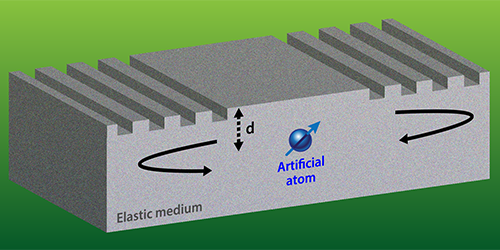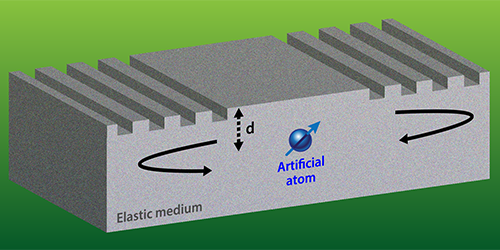Connecting Qubits with Sound
As quantum computers eventually become larger, they will need a way to connect distant qubits. Sound waves that skirt along a surface may provide a solution. A new theoretical analysis details how surface acoustic waves (SAWs) can be coupled to qubits embedded in a micrometer-scale acoustic cavity. Through this coupling, the SAWs can act as a “quantum bus,” relaying information over SAW waveguides.
Photons have been a natural choice for carrying quantum information, and recent experiments have connected two qubits with microwave photons inside a millimeter-long cavity. A possible alternative medium is acoustic phonons, which can potentially couple to qubits in chip-compatible cavities that are much smaller than those used for photons.
Previous work on phonon-qubit coupling has largely focused on phonons localized within cantilevers or similar resonators. Ignacio Cirac of the Max Planck Institute for Quantum Optics, Germany, and his colleagues explored the potential of SAWs. These surface-bound “ripples” can be confined in cavities by grooves that act like mirrors. And—unlike phonon modes in a cantilever—SAWs can travel long distances over surface-etched waveguides. To couple SAW phonons to a qubit, Cirac and his collaborators modeled a SAW cavity in which the surface material is piezoelectric. SAWs inside such a cavity would generate an oscillating electric field, which could interact with a nearby qubit—no matter what type it is. This “universality” implies that a qubit made from quantum dots, for example, could transfer its information to a SAW phonon, and this phonon could deliver the information to a distant qubit that might be a trapped atom or other type qubit.
This research is published in Physical Review X.
–Michael Schirber





